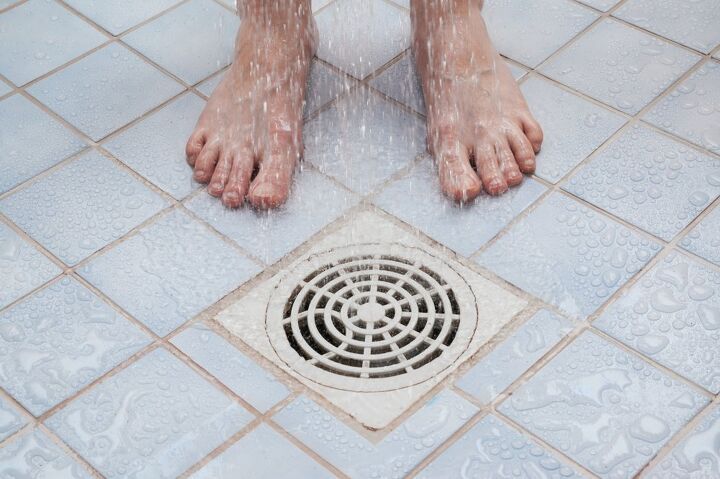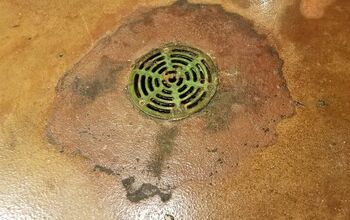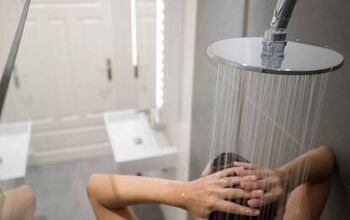Where Does Shower Water Go?

When people take a shower and then use sinks and toilet facilities at home, the water appears to vanish, never to be seen again. If you’re wondering where that used shower water goes and whether it will be discarded or recirculated, you’ll be relieved to know that the majority of the water is reused and recycled. The forms of treatment are straightforward but fascinating.
Shower water, as well as water from sinks, toilets, and other drains, enters the drainage system and is routed into a septic tank or sewage treatment plant. Septic tanks filter the water and release it back into the ground. Water treatment plants filter and clean the water with chemicals so that it can be reused and recycled.
Below, we will go into where your shower water goes, regardless of whether you have a septic system or are hooked up to the city sewer.
Where Does Shower Water Go if You’re on a Septic Tank?
When shower water hits the drain, it mixes with wastes from the toilet and sinks and is routed to a septic tank or a sewage treatment plant.
If it is disposed of in a septic system, it will be cleaned and permitted to permeate into the earth. However, if it goes to a wastewater treatment facility (sewage treatment plant), it is washed with chemicals and pieces of machinery before being recycled and reused.
What Happens to Shower Water in Septic Tanks?
Shower water enters the septic tank and is inherently broken down by bacteria, allowing it to seep into the ground and become part of a natural hydrological cycle.
The following steps are used to clean the water in the septic tank:
- Water enters the system. Wastewater from the shower, toilets, and sinks flows into the septic system via the plumbing.
- Degradation. Anaerobic bacteria degrade organic material in soupy waste (effluent).
- Separation. Anaerobic bacteria combustion products merge with inorganic nanoparticles to form sludge, which settles to the bottom of a septic tank.
- Scum rises. Scum, which is composed of oils, greases, and lipids, will rise to the surface of the septic tank.
- Screening. Solid particles are screened from the outlet pipe, allowing only the liquid waste (effluent) to enter the drain field. The sewage septic field has a greater surface area that encourages bacterial activity and allows water to percolate into the ground.
- Reintroduction. The drain septic field tubing allows waste disposal to permeate into the gravel enclosing it and thus into the soil all around the septic system. This coarse aggregate also allows air to reach the septic tank bacteria.
- More decomp. Further aerobic waste decomposition occurs in the compost and small stones surrounding the septic tank to extract waste materials from the remaining water.
- The clean water now rejoins the cycle. The clean water then percolates into the ground, rejoining the natural water cycle. The drain septic field, also known as the leach field, contains holes that allow water to be innately soaked up by the soil.
Where Does Shower Water Go if You’re on City Sewer?
If you’re hooked up to the city sewer instead of your own septic tank, the process of what happens to the wastewater is vastly different.
First Stage: Primary Treatment
The very first stage of treating wastewater, also known as a mechanical treatment, includes the elimination of up to 60% of the floating solid waste from the liquid.
Human waste, canisters, fruit and vegetables, grease, rocks, sand, and a variety of other items are included. The eliminated solids are disposed of in a landfill or another suitable location.
Second Stage: Next Treatment
The residual wastewater is decomposed by aerobic microorganisms in the second stage, with elements such as food and human waste, body washes, and others being decomposed.
The very same bacteria will create floc (waste blocks) that will be excluded from the water treatment facility.
Last Stage: Tertiary Treatment
The tertiary stage entails filtering and decontaminating the water before releasing it back into the environment.
Phosphorus and nitrogen, for instance, are separated from the water to prevent algae blooms in rivers, lakes, and other places where the liquid will end up.
In this stage, disinfection is typically accomplished through the use of ultraviolet (UV) light, ozone, or chlorine. Ozone and UV light are less harmful to the environment than chlorine. They are, however, quite expensive.
Final Stage: Water Release
Finally, the water is returned to the environment, either through natural bodies of water sources such as rivers as well as lakes or into the municipal water system for reuse.
There is no special way to reintroduce shower water, as it’s all mixed together. After it’s all cleaned up, it is then put back out for reuse.
Do Toilet Water and Bath Water Go to the Same Place?
The sewer system network is linked to the shower and toilet. Both can have their wastewater treated at the same treatment center. Gray water is effluents that contains no substances, which is what shower water essentially is.
No matter what you’ve used your water for, it needs to be filtered and cleaned before it can be reintroduced. This also goes for shower water, which is why it’s all mixed with sewage, as it all needs the same treatment.
Does Shower Water Go into the Septic Tank?
Most, although not all, septic systems use gravitational pull to transport waste to the septic tank. This waste also includes shower water.
When you flush a toilet, switch on the water, or take a bath, the wastewater flow through your house’s drainage system and eventually winds up in the septic tank.
Do All Drains in a House Go to the Same Place?
Each of your sinks, toilets, baths, and washer has its own branch line outflow. At some point, those same branch points are connected to your main house drain.
If your house drain becomes congested, all of the other drainage systems in the house may become clogged as well.
Therefore, it’s safe to assume that your shower water runs where all of your other waste runs. As stated before, if you’re hooked up to the city sewer, your water will go to a treatment plant. If you’re on septic, that’s where your water will go.
Does Shower Water Go to the Sump Pump?
Water flows into the sump pit from your washer, baths, dishes, kitchen, and possibly even the toilet. All of the water exiting the home needs to go through the sump pump, and this includes shower and bathwater.
However, it’s important to note that not all homes have a sump pump. Therefore, if your home does have one, then yes, your shower after runs through it. If your home does not have one, then obviously, the shower water in this particular household bypasses that phase.
Does Shower Water Go to the Grey Water Tank?
If your house has a grey tank, this is where your shower water would go. This tank typically holds water from dishes, dishwashers, washers, baths, sinks, and many other things.
If the wastewater does not have solids or any type of excrement in it, this would be heading to where the greywater is. However, it’s not common to have a grey water tank in homes outside of a residential RV.

Heather is a passionate writer who loves anything DIY. Growing up, she learned everything from home repairs to design, and wants to share her tips with you. When she's not writing, she's usually hiking or searching for her next DIY project.
More by Heather Robbins















![Standard Dining Room Table Dimensions [for 4, 6, 8, 10 and 12 People]](https://cdn-fastly.upgradedhome.com/media/2023/07/31/9074335/standard-dining-room-table-dimensions-for-4-6-8-10-and-12-people.jpg?size=350x220)











